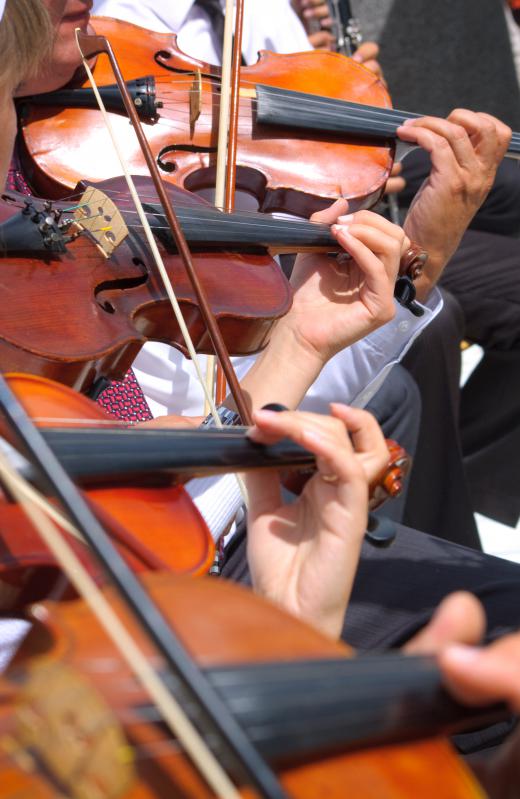At MusicalExpert, we're committed to delivering accurate, trustworthy information. Our expert-authored content is rigorously fact-checked and sourced from credible authorities. Discover how we uphold the highest standards in providing you with reliable knowledge.
What is a Fugue?
Fugue is the name both of a genre of musical composition, as well as a technique that can form part of a larger composition with other techniques used as well. As a technique, it refers to the practice of repeating thematic material in each voice of the composition in turn, each one proclaiming it in turn, and with material developed by imitative counterpoint. It differs from a round in that each voice continues after stating the theme, going on to create accompanying material.
Key elements of the fugue include the exposition, in which the main material or subject is played in the tonic key by the first voice and the answer, which features the same material given by the second voice and transposed to the dominant or subdominant. Optionally, the first voice may introduce a counter-subject. A range of other developmental strategies are possible, but not required.

Although there were a number of composers of fugue who preceded him, the greatest is generally considered to be Johann Sebastian Bach, who developed the genre in his works Art of the Fugue, the Goldberg Variations, and the Well-tempered Clavier. Other well known composers in the early 18th century include George Frideric Handel and Johann Joseph Fux.

Johann Sebastian Bach’s fugues have been used in a number of movies. “Toccata and Fugue in D minor” has been used the most, including in the movies The Aviator, Sour Grapes, The Pest, Gremlins 2: The New Batch, Electric Dreams, Speed, Rollerball, The Monkees in Paris, The Great Race, 7 Faces of Dr. Lao, Mysterious Island, 20,000 Leagues Under the Sea, Sunset Boulevard, Fantasia, and Dr. Jekyll and Mr. Hyde. Other Bach fugues that have found a place in the movies include:
- Code Name: The Cleaner — “Prelude and Fugue No. 13 in F Sharp Major”;
- Thank You for Smoking — “Little Organ Fugue”;
- Harvard Man — Well-tempered Clavier Book 1: “Prelude and Fugue No. 13”;
- House of Games — Fugue from the “Toccata and Fugue in C minor”; and
- The Godfather — “Passacaglia and Fugue in C minor.
Moving into the Classical period, fugue lessened in importance, while the sonata and symphony were developed. Nevertheless, Wolfgang Amadeus Mozart used fugal development in the final movement of his Jupiter Symphony, as well as in the overture to Die Zauberflöte — The Magic Flute in English. And Ludwig van Beethoven employed a fugal finale in Missa solemnis.
Using elements of fugue in larger works continued, with Richard Wagner using fugal counterpoint in his overture to Die Meistersinger — The Mastersinger in English, and Berlioz in La damnation de Faust — The Damnation of Faust in English. Alban Berg created an atonal fugue in his opera Wozzeck, and Igor Stravinsky included one in the second movement of the Symphony of Psalms. Gradually through the twentieth century, interest in the fugue came to be more connected with historical imitation than with new developments in compositional technique.
AS FEATURED ON:
AS FEATURED ON:












Discuss this Article
Post your comments